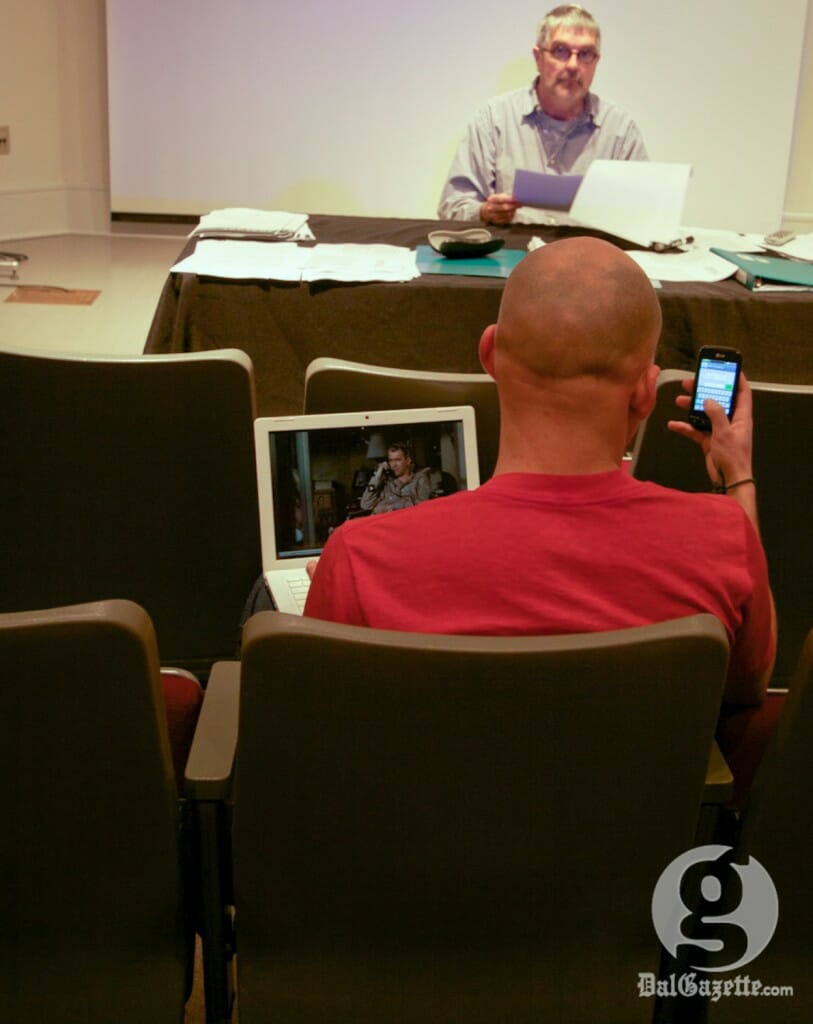

Distracting, empowering, engaging, expensive– in the classroom, technology sets a multitude of tones. (Alice Hebb photo)
I find myself thinking “the future is now” while writing the 2013 at the top of my notebook. There’s no denying it, either—technology has become a crucial part of our daily routines. It’s no surprise that many students cannot sit through a class without updating their Twitter feed. Wouldn’t it make sense to apply students’ interest in technology to their interest in course material?
I recently interviewed Dalhousie professor Binod Sundararajan over email regarding a study he is currently conducting with the Rowe School of Business at Dal. “Texting Tolstoy” focuses on the effectiveness of texting as a tool to facilitate classroom discussions, enhancing student engagement in the university classroom. Researchers are looking at three different types of communication between students during the study, including instant messenger, face-to-face and texting.
Their findings are revealing that students using texting and instant messaging were able to argue points in a standard format and learn new concepts while discussing the subject matter. A supervised instant message thread also stopped students from straying from the task. The students also completed surveys on the effectiveness of technology in their own classes. So far, this study has revealed that most students believed it enhanced their discussions and assisted in overcoming communication barriers.
Is texting really the answer? No doubt it engages the student by giving them a chance to excel in their own medium (texting). It gives shy students a chance to speak up without fear and it can overcome language barriers.
In the bigger picture, there is a reason that teachers ask students not to use their cell phones in class: distraction. I’ll admit that I find myself reaching for my phone during some of those lengthier lectures, whether to answer a text or play a quick round of Angry Birds. But I believe technology is necessary to today’s curriculum. Tools like Blackboard Learn and student email accounts have upgraded teacher-student communication. During our interview, I asked Sundararajan at what point he considered technology to become an obstacle in learning, rather than an asset. He stressed that as long as the devices are being used for class discussion, they enhance a student’s learning. When the device interrupts without any useful purpose, it automatically becomes a hindrance.
Like everything else, technology in the classroom should be used in moderation. Depending on the subject of study the amount of technology used will differ. As an ever-evolving society we should never expect a fully technology-based curriculum, nor should we expect one completely devoid of it. Sundararajan said, “A course that requires students to deliberate and discuss material, can benefit by the presence of different technologies that facilitate these discussions, while another course like computer programming or math can benefit by more asynchronous technologies that allow students time to think and cogitate.” It is clear that the best system is one that integrates technology and face-to-face interaction.
I would like to bring in the New Year by stressing the importance of a single point: we need to use the tools we are given. Using technology to its full potential can overcome the boundaries found in today’s classroom, in ways that a textbook never could.






